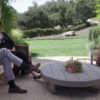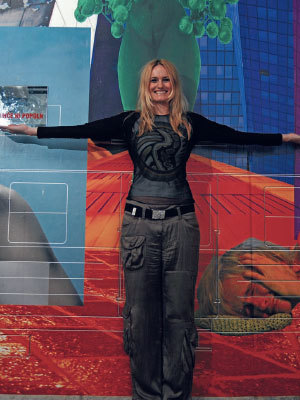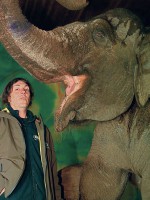Is it harder to make a good ad today than it was ten years ago? I can't say it's harder, but it's definitely different to make a good ad than it used to be, because the problem is the density of information. It is difficult to find the point in a mass of data and before you get to something use it
Is it harder to make a good ad today than it was ten years ago?
I can't say it's harder, but it's definitely different to make a good ad than it used to be, because the problem is the density of information. It's hard to find the bottom line in a mass of data, and it can take a very long time to come up with something useful. Sometimes there was a little less information and even this was better selected.
Creating ads is a free activity. Is there a recipe for creating an engaging ad?
The point is that there is some good idea in the ad. The idea is good when you feel something about the ad, when the ad is something more than just a fleeting glance. Most often, the ads contain a twist, an allusion to something, say sex. Maybe it's that we're all too burdened with it because we don't have enough time. A successful ad requires a quick solution. Humans are concentrated for a very short time and it is necessary to make use of this time. You look at the ad and you already know what it's about.
Are you also doing ads for products you don't believe in?
If we work with a team, we first talk about a product in a close circle and with friends: are we familiar with the product and what do we think of it. If we are not sure about the product after that, we do a small survey to find out the actual state of the product. If most people don't like a certain toothpaste, then let's highlight something that that toothpaste has, even if it's just a pretty packaging. In this case, we sell e.g. freshness, we are talking about lifestyle and not quality. You emphasize one truth to hide another.
You creatives are usually alike, you think alike. What are the three characteristics of every creative person?
The first characteristic is that he must be sentient, have intuition and understand the experiences of others. Ads these days have to be emotionally charged, otherwise no one would watch them. The second is the visual representation. A creative must know what he would like to see and must have an idea of what kind of image is suitable for a certain type of people. The third quality is that you know what is good and what is not, that you know how to get the best out of a person. This is actually what every creative would like to get from their viewers.
Does it happen that you walk around town, see a product, get an idea and offer it to the client yourself?
Most of the time, the best ideas come in my spare time, when my brain is turned off and when I'm not busy with work; be it in the park, the zoo or on the toilet. Otherwise, the latest approach in advertising is to offer ideas to the manufacturer yourself. You follow what a certain manufacturer advertises and how it is doing. It has already happened many times that an idea was prepared and offered to the manufacturer.
You already follow the ads subconsciously. Has anything caught your attention lately?
Rather than advertisements, I would highlight a group of creative street artists Zek. They impressed me. They do crazy things. If I were still a student today, I would definitely be among them.
You have already received many awards. These rewards boost confidence and price?
I would even more (laughs). Of course, awards boost my confidence; they tell me I did something right. I was the happiest when the magazine Communication Arts awarded my work - Predin's poster - an award of excellence. Already in high school, I told myself that when I was in this magazine, I would know that I had achieved something. The Magdalena award also means a lot to me, where I made a personal confession in a way. With awards, demand increases, people know me better.
Who have you worked with?
I started at the Luna agency, continued at the Arih agency. I spent a year in Zagreb, when I worked in the JWT Zagreb Marketing Studio and with Kibla, where I had a solo exhibition in December 2007. I independently created quite a few websites and integrated images for Predin, the agency Arih, Rog, Romano Kranjčan, the Mimo vrto online store, the film production Salt & Pepper, the Dalmatin printing house, Zavod Zajček... Nowadays, I have less and less time for independent work.
Do you know the eight-hour workday, or are nights with coffee and a computer closer to you?
Since I've been married and have a family, I try to do as much or everything as possible within eight hours. But sometimes it was different. When I was at the Luna agency, we were a team of enthusiasts and we worked fifteen hours a day. We literally lived for work. Now I also live for work, but I need free time to gather energy.
Where do you gather energy; as artists, are you closer to parks and museums or can we also see you at a crazy party?
Lately, since I've been a mom, the parties have died down a bit. Now I prefer to go out into nature, somewhere around Grosuplje, Iška vintgarje, Rakitna, Bohinj or Kamnik. We often go to the zoo, the botanical garden, the arboretum, to the source of the Krka... I also like to travel a lot, and if I had enough time, I would gladly fly somewhere; somewhere in Africa or Australia...
Is Slovenia too small for a person with such open eyes as you?
There are many things that I miss in Slovenia, but it's more about current things. But now that we have the Internet, the world is smaller and more accessible. It's not like I've been missing something my whole life. At the beginning of my journey, I lacked the finances to be able to study abroad. In Slovenia, it bothers me that there are an incredible number of agencies per square meter and, on the other hand, relatively few clients. This circle is bigger abroad. At our place, we all work for pharmaceuticals, sometimes for dairies, beer, cars... and the circle is quickly closed.





